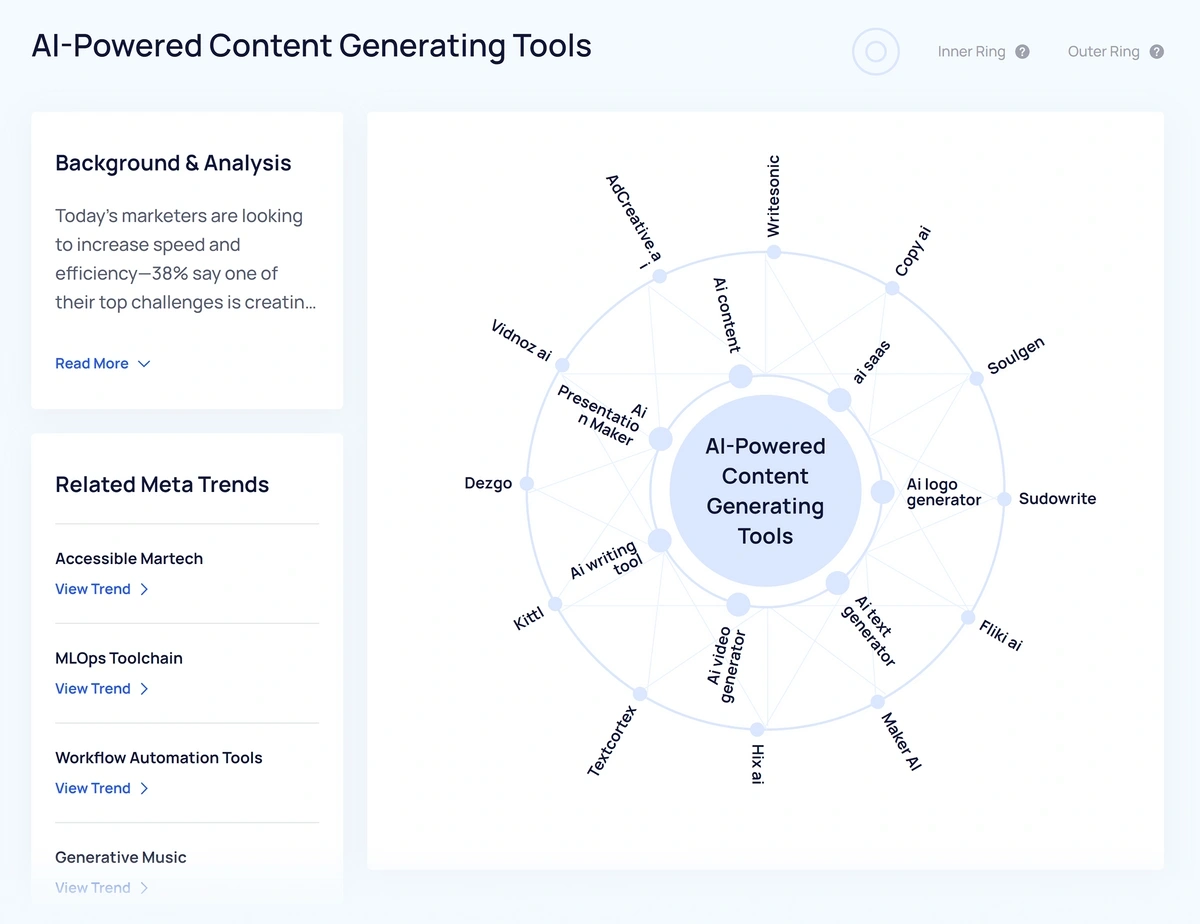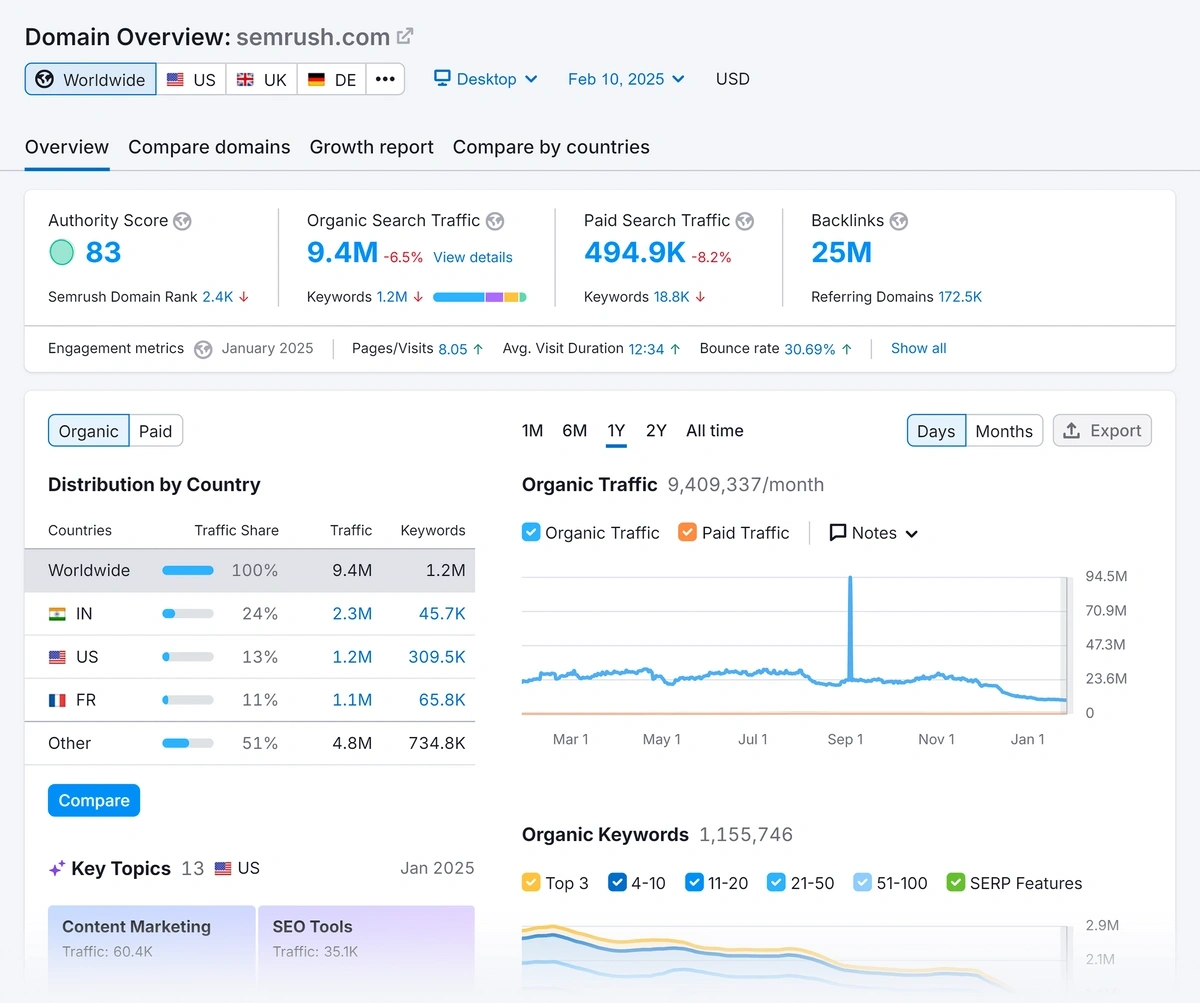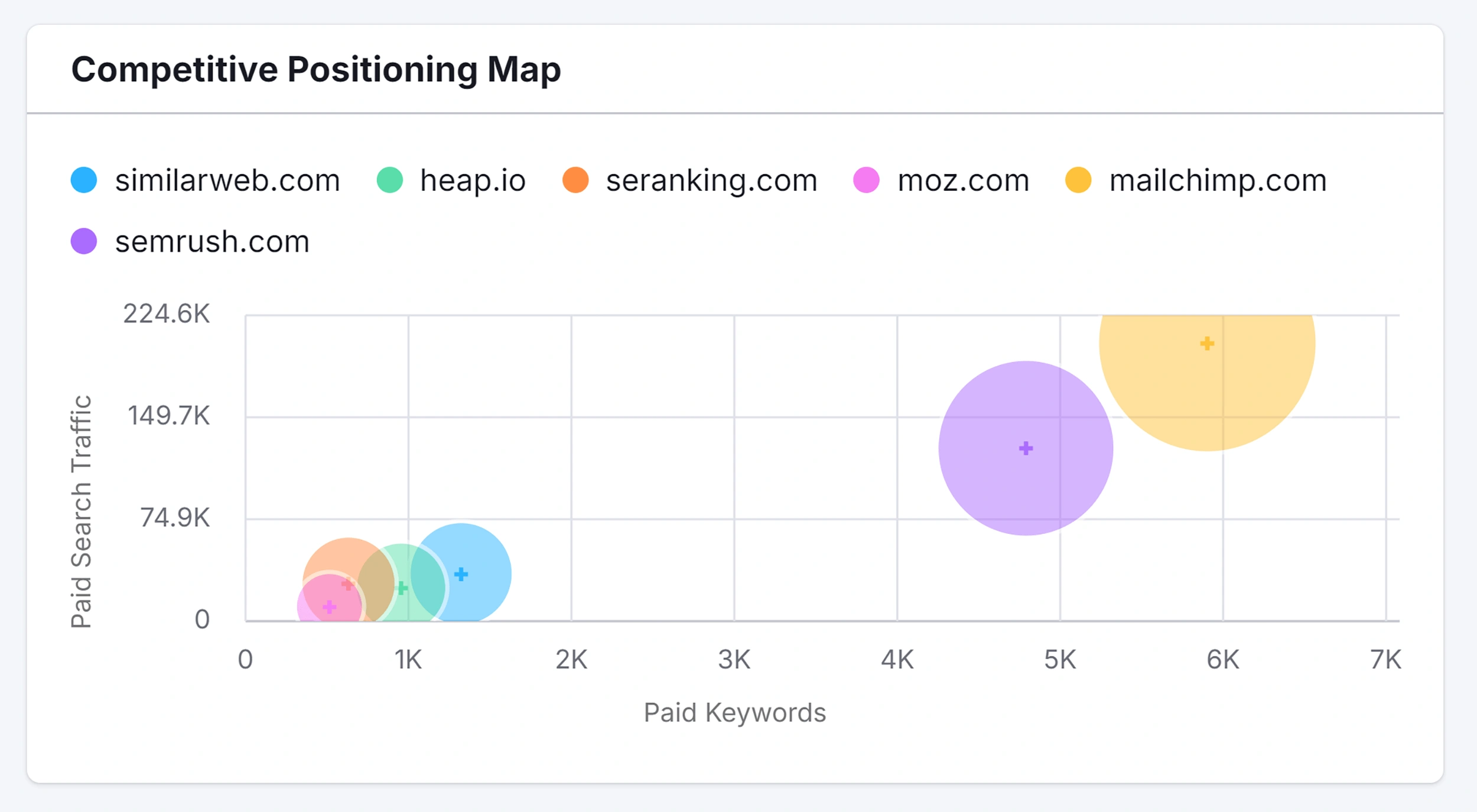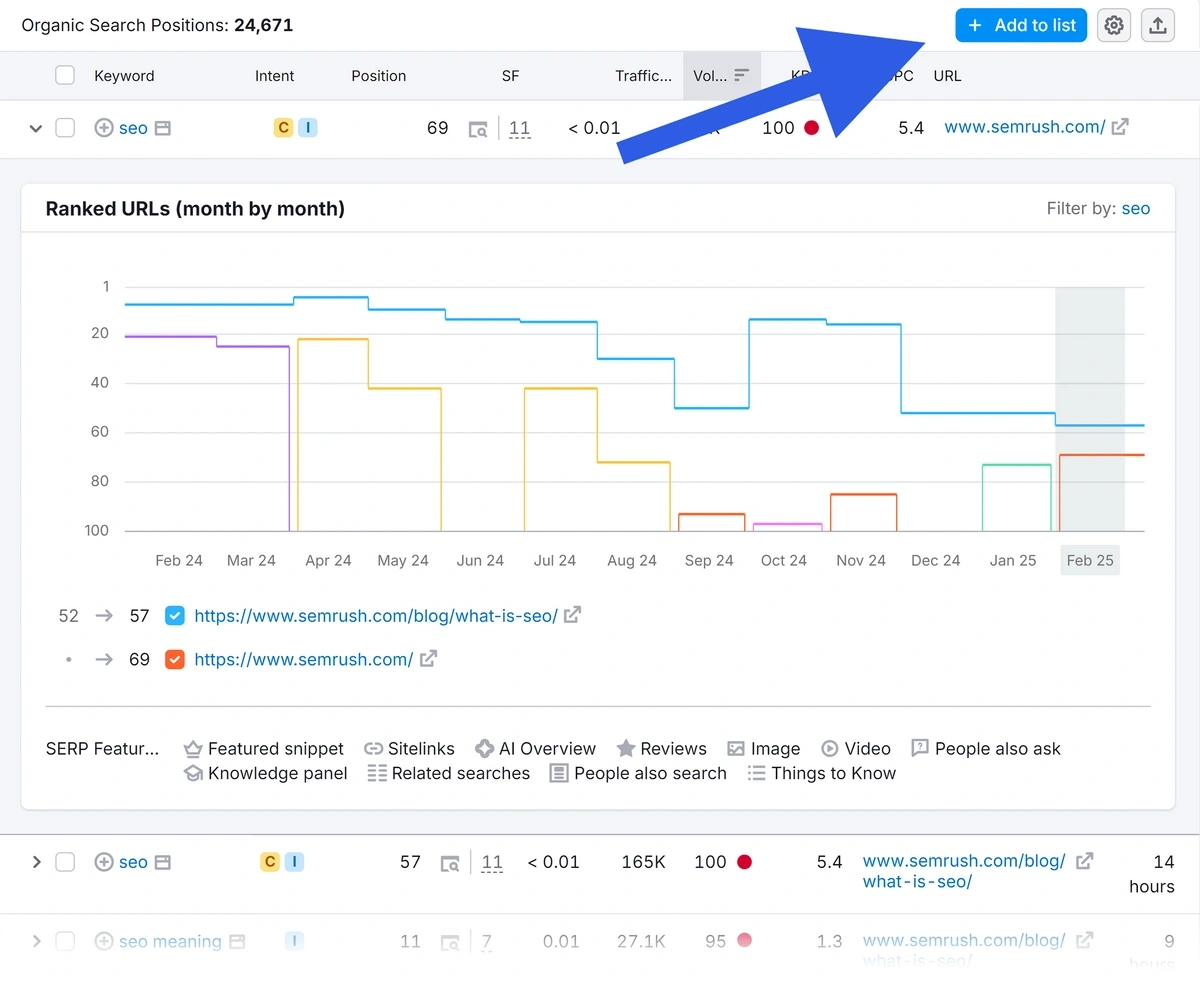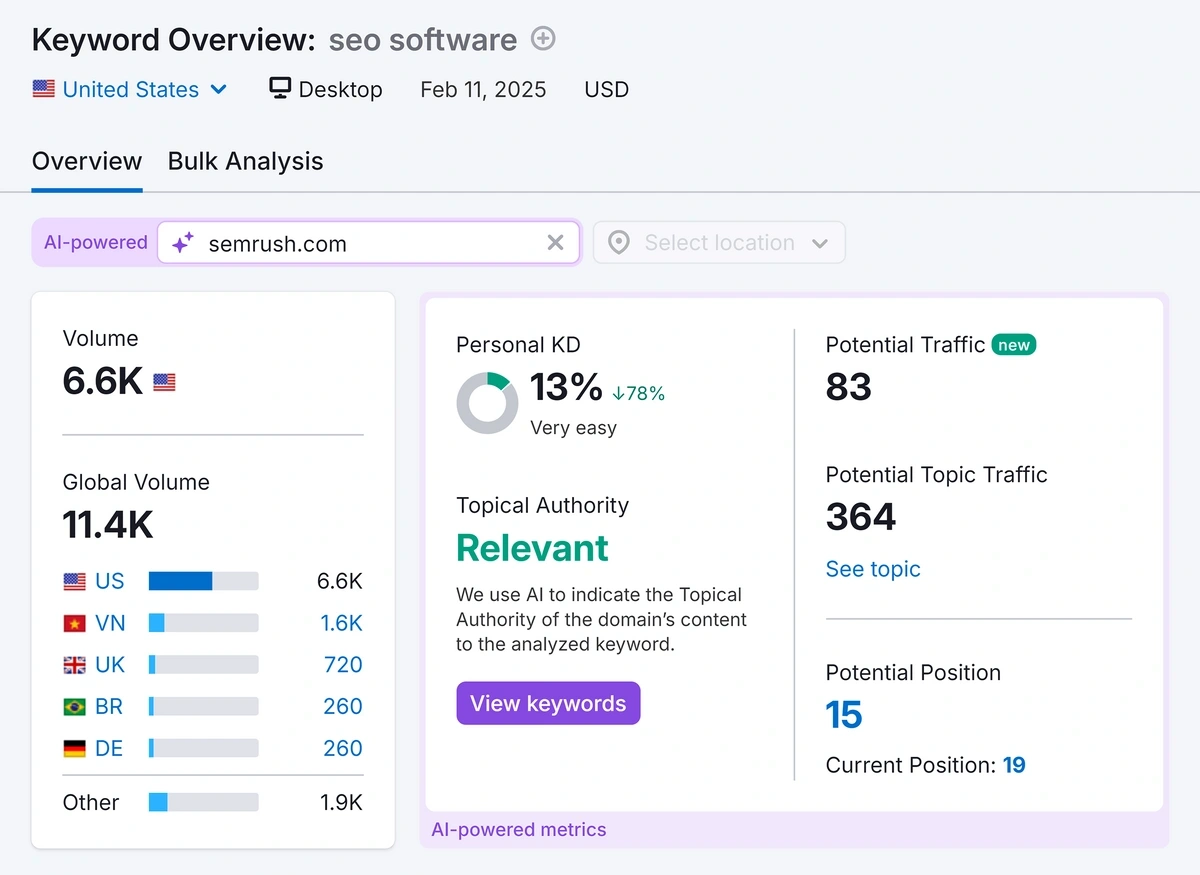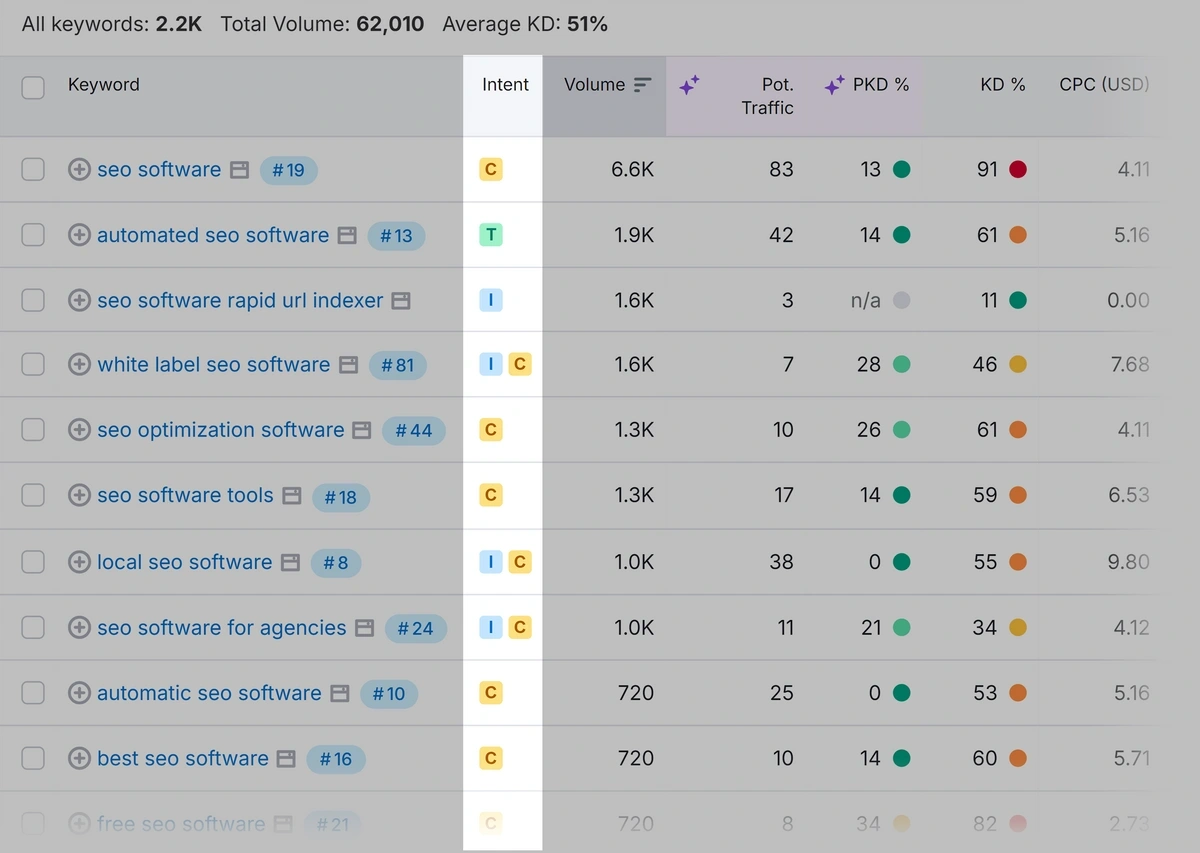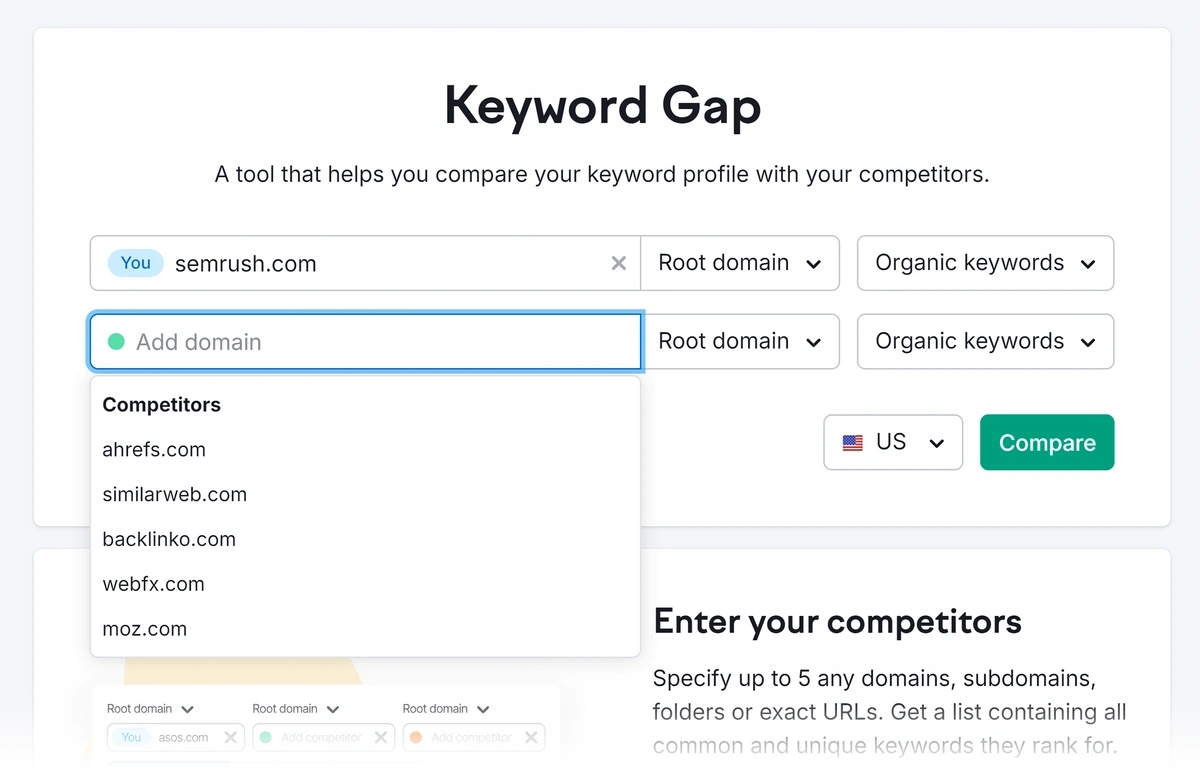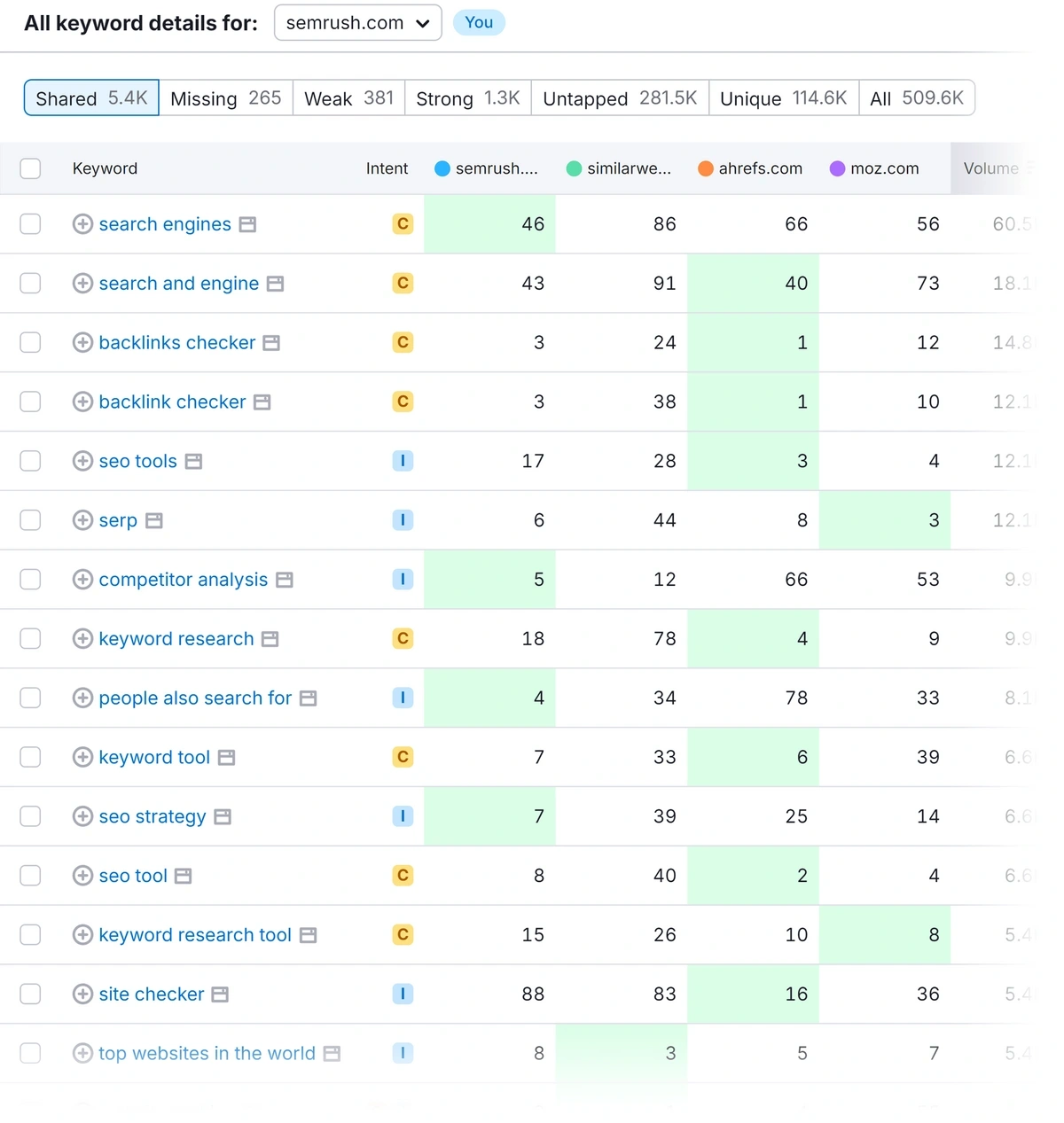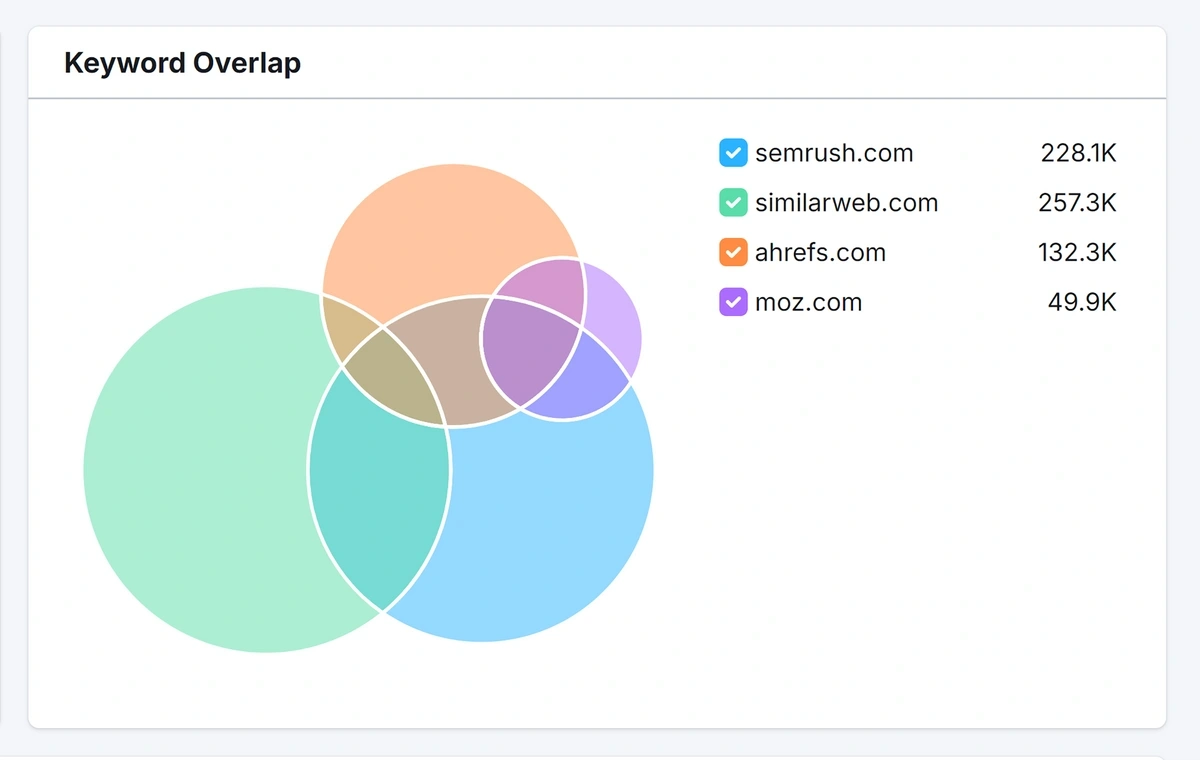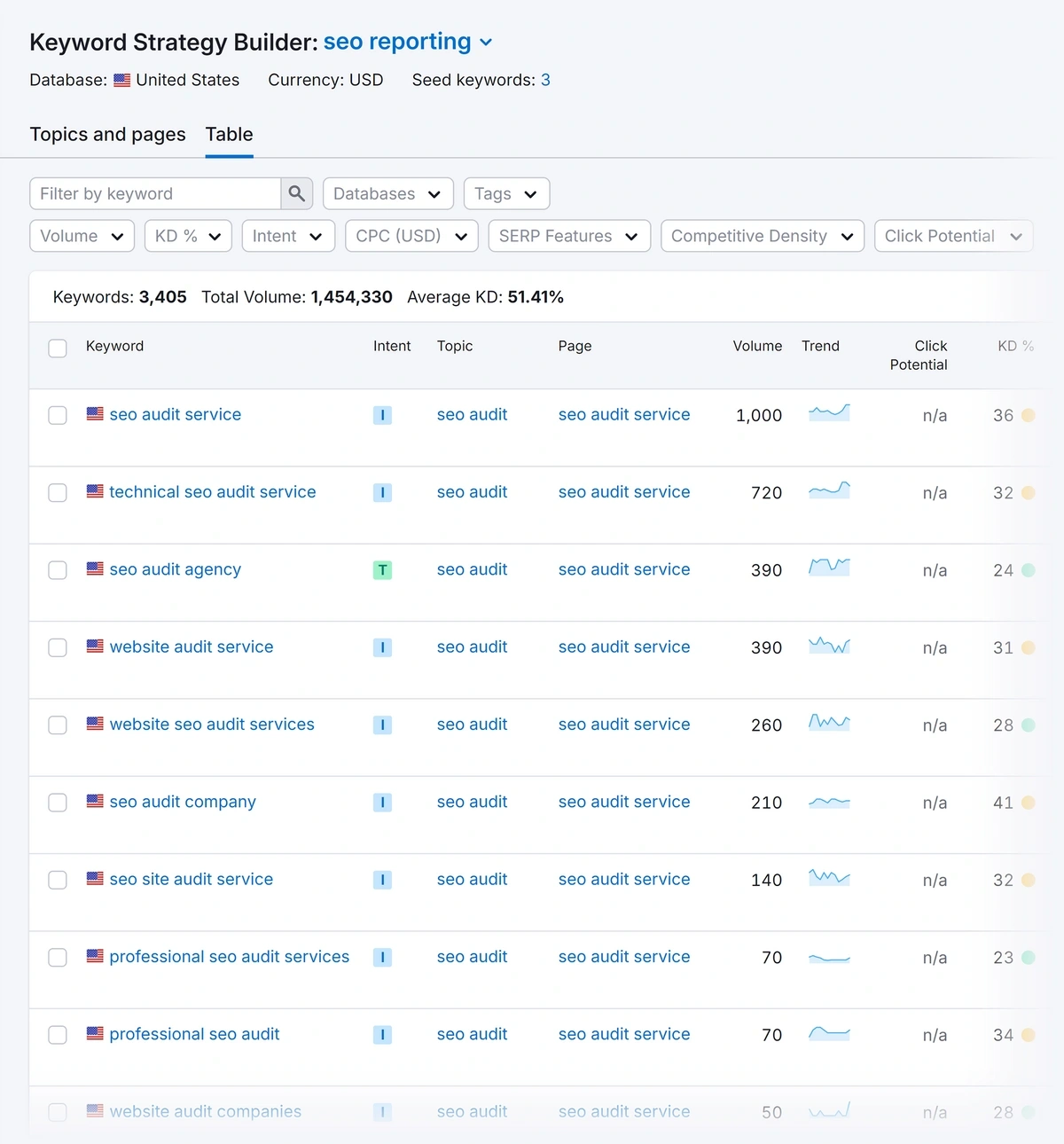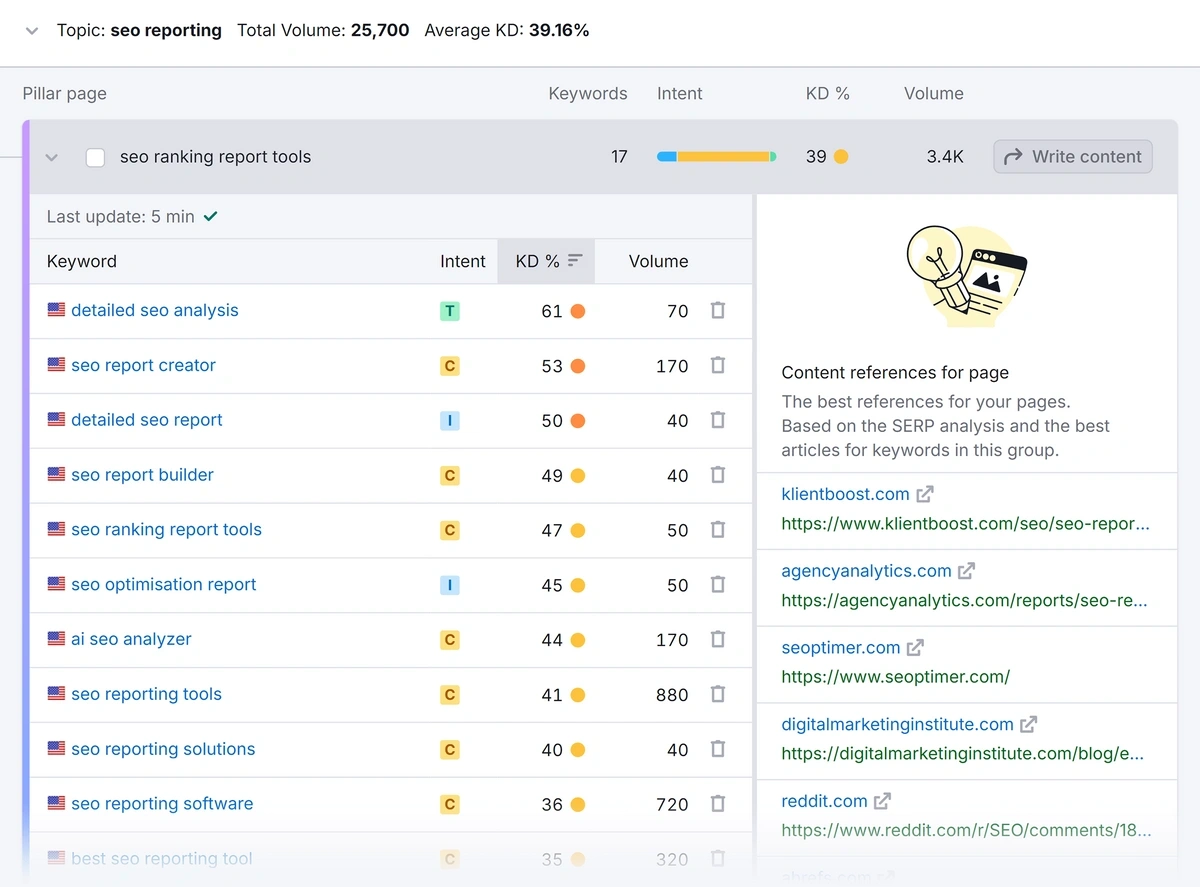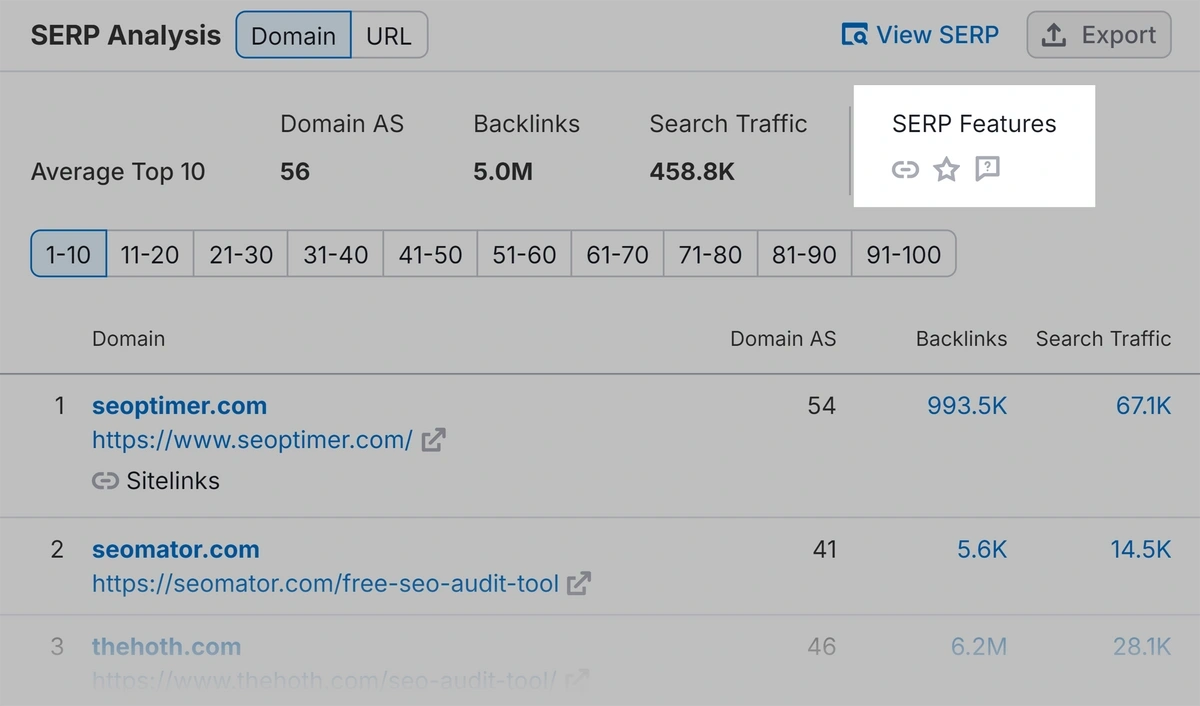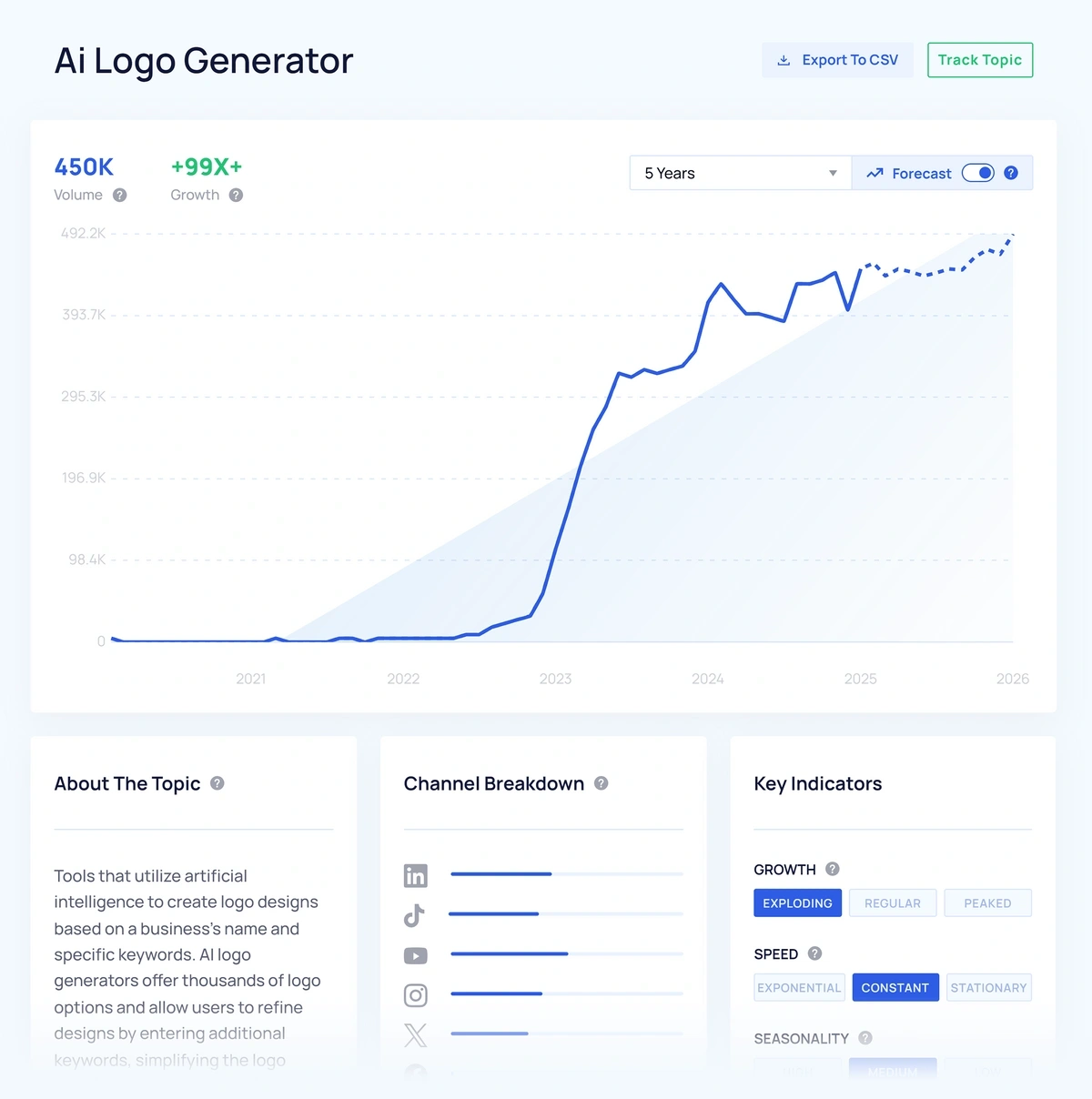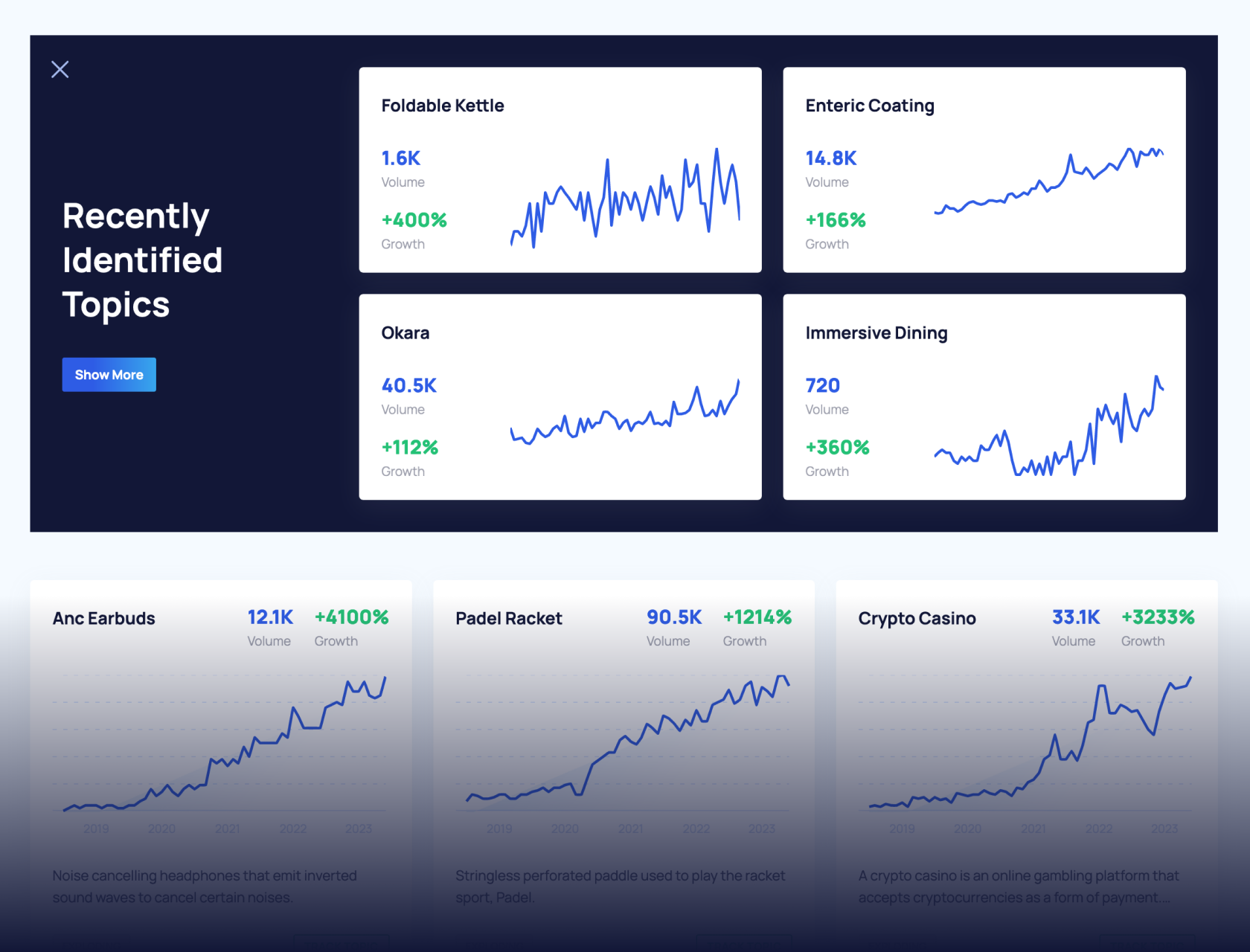
How to Use Semrush for Keyword Research: A Quick Guide
Organic keyword research is an important process that ensures you aren’t wasting your time when creating new webpages.
If you’ve never done this research before, then it may sound a little complex or confusing. But I’ve been doing this research for well over a decade and can assure you—you’ll get the hang of it quickly!
Throughout this guide, I'll be referencing Semrush keyword research tools with step-by-step instructions and screenshots.
Why Keyword Research Matters
First, let's talk about why you need to do keyword research for search engine optimization (SEO).
You can write a witty, interesting essay… but if it doesn’t align with the information your audience needs, it’s not going to do much for your organic traffic.
By starting your content workflow with keyword research, you can identify the key topics and terms that people are searching for online.
When you use these terms in your content, you’re more likely to connect with your ideal reader or customer.
Get More Search Traffic
Use trending keywords to create content your audience craves.
You can use the keywords you find in several ways.
In Product Names and Page Titles
If you know what terms your target audience and competitors use when referring to your inventory, you can get your pages to show up in the relevant results.
On existing pages
The terms people use to search for information change over time.
If you find that searches for a new word or phrase are trending, adding new keywords into your existing content can keep you at the top of search results.
To develop new blog post ideas
There’s nothing wrong with thinking of a blog post idea and then doing keyword research to find the best terms to include. But keyword research can also help you come up with new content ideas, too.
Searching for terms in an SEO or trend spotting tool (like Exploding Topics) is a great way to find related keywords and concepts. Our Meta Trends reports are a great example of how one term can turn into a number of keyword ideas.
Keyword Research Methods
There are a few different approaches you can take when doing keyword research.
1. Understand What Keywords Your Competitors Rank For
The first step in any keyword research project is to conduct a quick competitor analysis.
If you know who your competitors are, you can analyze their websites using a tool like the Semrush Domain Overview.
A Domain Overview report shows you what keywords your competitors rank for and much traffic they’re getting from search results.
And if you aren’t sure who your search competitors are, you can find that out with Semrush, too: just run a Domain Overview report on your own website and look at the Competitive Positioning Map.
2. Identify Content Gaps
Content gap analysis is another great way to find keywords for your website.
This process involves looking at content currently in the search engine results pages (SERPs)—then evaluating how you can create better, more relevant content on the same topics.
As you look at the SERP, ask yourself:
- How old is the top content? Can you create content that’s fresher and more applicable to what searchers need right now?
- Are all of the top articles saying the same thing? Are any subtopics not adequately addressed? You can create content to fill these gaps.
- What kinds of content appear on the SERP? If there are image or video results, check those out too. Sometimes, creating a better video or infographic can give you a new way to get onto a competitive SERP.
3. Conduct a Content Audit
You can also dig into your own content inventory for ideas.
Using Google Search Console or the Semrush Position Tracking tool, look for:
- Pages that don’t rank well or get few clicks
- Pages that have a high bounce rate
- Pages that were published more than a year ago or have an old date in the title
If you find these issues during a content audit, it can indicate that a page isn’t in its best fighting form.
How I Do Keyword Research With Semrush
Let’s walk through the keyword research process together using Semrush.
1. Locate Existing Keywords
When I first start the keyword research process, I need to get a sense of where a website currently ranks in SERPs.
To do this, I plug my site’s URL into the Semrush Domain Overview tool and take a look at two things:
- Key Topics. This report shows me the terms associated with my site. I can use it to assess how well search engines understand what I’m trying to communicate, and get ideas for seed keywords.
- Organic Keywords. This report shows me how I rank for different terms. Because I’m looking for optimization opportunities, I’m going to focus on terms where I don’t rank in the top 10.
If I decide I want to target any of these keywords, I’ll add them to a list in Semrush.
To do that, click the checkbox next to any keyword and click the “Add to list” button.
2. Search the Semrush Keyword Database
Now it’s time to search the database and look for new keywords.
I’m going to take the terms and topics I noted in step one and use these as my seed keywords.
Seed keywords are sometimes called target keywords. They’re the starting terms that you use to find additional opportunities.
To start, I open up the Semrush Keyword Overview tool and enter my terms. (You can analyze up to 100 keywords in bulk this way, which is why I love it.)
I’m also going to put a domain name into the search box so that I get personalized results.
Tip: If you don’t have a Semrush account, you can start your analysis using our free keyword research tool.
3. Look at Keyword Search Volume and Difficulty
As I browse the keyword database, I look at two key metrics: search volume and keyword difficulty.
- Search volume tells me how many people search for this phrase in an average month.
- Keyword difficulty indicates how hard it will be for my website to rank well on this keyword. Semrush shows general keyword difficulty scores. And because I entered my domain in the previous step, I can also see an AI-powered keyword difficulty metric based on my own site’s topical authority.
You can see both metrics in any Semrush Keyword Magic Tool or Keyword Overview report.
The ranges I look for vary based on how established my site is.
If I’m working on a site that has an old, well-known domain with lots of existing content, I can reasonably target keywords with high search volumes and difficulty scores.
But if I’m working on a small or brand-new site, I’m going to look for long-tail keywords that have a lower search volume and easier difficulty score.
4. Consider Search Intent
Next, I’ll consider search intent, or user intent.
There are four types of search intent, and they can clue you in to whether or not searchers will want to click on your site.
- Informational. This means that the typical searcher wants to learn more about a topic.
- Navigational. This indicates that the searcher is looking for a particular page.
- Commercial. This type of search intent lets you know that people are interested in buying or signing up for something, but want more information before they do so.
- Transactional. This is the next stage after commercial, and indicates that searchers are ready to complete a purchase.
Semrush uses a color-coded labeling system to show search intent.
Once I’ve identified the best keywords that have the right search volume, difficulty, and intent for my needs, I’ll add them to my keyword list in Semrush.
5. Perform a Keyword Gap Analysis
I’ll also conduct an in-depth competitor keyword gap analysis using the Semrush Keyword Gap tool.
This lets me compare up to four of my competitors at once—a big time saver versus typing each one into the Domain Overview tool separately.
Semrush will suggest competitors for your site, though you’re welcome to type in any domain.
When I run the analysis, I can quickly see lists of keywords that are:
- Missing: All competitors rank for these terms, but I don’t
- Weak: I rank for these terms, but lower than my competitors
- Untapped: I don’t rank for these terms and only one of my competitors does
- Strong: I outrank my competitors on these terms
- Unique: I rank for these terms and my competitors don’t
I can also see a keyword overlap graph that shows which of my competitors I share the most keywords with.
I focus on missing, weak, and untapped keywords in this stage. And as before, I evaluate search volume, difficulty, and intent for each one.
If everything lines up, I add the term to my list of keywords!
6. Create topic clusters
Now it’s time to look at the list I’ve created—it’s stored in the Semrush Keyword Strategy Builder.
When I click the “Cluster this list” button, it generates content clusters related to these keywords.
Semrush will analyze the terms I’ve saved, group them together by related topic, and find additional relevant keywords that relate to each group. In about 15 minutes, I’ll have a complete content marketing plan ready to go.
Semrush even gives me ideas for sources and references that I can use when building each cluster.
This is a really quick way to build up your SEO strategy.
7. Investigate SERP Features
You aren’t limited to creating written content with your keywords and clusters, either.
As I review the content clusters, I’ll click on different terms and look at the SERP features associated with each one.
Semrush shows me if the SERP contains:
- AI Overviews
- Featured Snippets
- Sitelinks
- Reviews
- Videos
- People Also Ask questions
- Discussion and Forum results
This is important because SERP features drive additional traffic.
For example, grabbing a Featured Snippet will put my site above all other results, allowing me to get more clicks than the sites ranking #1-3.
The Best Analytics for the Best Value
If you want all of the best features of the SEO toolkit but you also need to track AI results, Semrush's new bundle, Semrush One, is the way to go.
Semrush One combines the best of the SEO toolkit with the AI Visibility toolkit, giving you the most comprehensive view of your website performance for the best value.
Plans start at $165.17/month when you pay annually. You can access an exclusive 14-day trial that gives you extra time to try out the features and see how they can help your site.
Use Exploding Topics Pro to Complement Keyword Research With Semrush
Semrush contains a lot of great data—I find that it has the most comprehensive keyword database out of any keyword research tool.
Adding some other tools into your SEO stack can help make your keyword research process even more effective.
Exploding Topics is my go-to when I want to learn more about a keyword’s popularity (or brainstorm new content ideas).
While some keyword research tools (including Semrush) show you a basic graph tracking a topic’s popularity, Exploding Topics goes much deeper.
You can even see a one-year forecast that gives you an idea of how the trend’s popularity will increase or decrease. As I research, I cross-reference trending keywords with Exploding Topics to make sure that I’m picking terms with long-term growth potential.
Optimize Your Keyword Research Strategy With Semrush and Exploding Topics
Semrush and Exploding Topics are both full of rich information, but also easy to use. This makes the tools a great choice for beginner SEOs and advanced marketers alike.
If you've never tried using Semrush and Exploding Topics together, I highly recommend it. The ability to develop my content strategy around current and future trends is amazing, and the keyword data I get from Semrush is unparalleled.
But you don't have to take my word for it: give it a try yourself and see how much easier it is to find the right keywords when you use these two tools together.
Grab a two-week Semrush free trial using our exclusive promo code, then sign up for a 14-day Exploding Topics Pro trial, too—it's just $1.
Stop Guessing, Start Growing 🚀
Use real-time topic data to create content that resonates and brings results.
Exploding Topics is owned by Semrush. Our mission is to provide accurate data and expert insights on emerging trends. Unless otherwise noted, this page’s content was written by either an employee or a paid contractor of Semrush Inc.
Share
Newsletter Signup
By clicking “Subscribe” you agree to Semrush Privacy Policy and consent to Semrush using your contact data for newsletter purposes
Written By


Emily is a freelance content writer at Exploding Topics. A former news correspondent, she has over 15 years' experience creati... Read more

